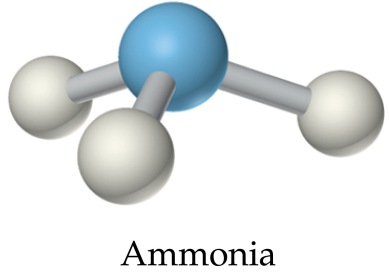As the kids say: Big If True.
From AgFunderNews, June 6:
- UK-based nanotechnology startup Nium has raised a $3 million seed round to develop its “Green Ammonia on Demand” system that enables onsite synthesis of ammonia to slash both costs and emissions.
- AgFunder led the round with participation from DCVC and existing investors from the UK and Europe including Carbon13.
- Nium will use the funds to assemble its first small-scale, low-energy-consumption reactors — called “minions” — that can deliver ammonia at lower cost and carbon footprint.
‘We want to eliminate Haber-Bosch’
Around 70% of all ammonia produced goes into fertilizers, making it crucial for 50% the planet’s food production. But today’s ample supply of ammonia comes at a high cost to the environment, says Nium CEO and co-founder Lewis Jenkins.
Nearly all — 96% — of the world’s ammonia production relies on the Haber-Bosch process, the chemical reaction that converts hydrogen and nitrogen into ammonia. The Haber-Bosch process itself is extremely energy intensive, gobbling up nearly 2% of the world’s energy usage and spitting back out around 450 million metric tons of CO2 annually, which is more than any other chemical-making reaction in existence.
Nium is among a growing number of scientists and companies hoping to clean up ammonia production. The company says its key differentiator is its “low-temperature, low-pressure ammonia synthesis” that can deliver ammonia at “a fraction of the price and pollution of traditional ammonia production methods.”
“Our patents are filed on a technology that allows you to make ammonia without the costs and emissions,” says Jenkins. “We want to eliminate Haber-Bosch altogether.”
Green ammonia on demand
Fertilizer and food are only one piece in a trifecta of areas Nium will address with its green ammonia technology.
Founded last year in Cambridge, England, Nium initially started out on farms, where it hoped to decentralize ammonia production, “but when we tried to get hydrogen delivered to these farms [for the process of making ammonia], it was a nightmare,” says Jenkins.
Hydrogen transportation requires high pressure and storage at cryogenic temperatures, to say nothing of the regulatory red tape surrounding the process.
Ammonia, on the other hand, has triple the volumetric density of compressed hydrogen and incurs less than one-fifth of the transport cost, says Jenkins. Its regulatory framework and infrastructure are also mature thanks to the role of ammonia in nitrogen-fixing for crops.
Nium is flipping the process and will initially provide hydrogen producers with its “Green Ammonia on Demand” system, placing Nium’s reactors onsite with these hydrogen producers, who can extract hydrogen from the ammonia as needed. Producers can move the reactors around as they choose, reducing the costs for long-term storage and long-distance transport....
....MUCH MORE
Okay, that's the front end. Now on to the back end to catch those little "N"'s before they end up in waterways.
Folks are very aware of the upside and are working on the front-end: Heads-Up Yara, CF: "Green ammonia electrolysis breakthrough could finally kill Haber-Bosch":
Solve this riddle for a $100 or $200 billion prize. It is that big a deal.
Since I have been, and will be, going on about ammonia as a carrier for hydrogen
NH3 - ammonia - three hydrogens attached to a nitrogen:

Credit: This Condensed Life
about fertilizer and guano, about Yara and Norsk Hydro and
Birkeland and explosives, I thought it time to add another post to ouyr
nitrogen mini-library.
From the cheerfully optimistic The Roots of Progress....
....MUCH MORE
And: "How Making One Chemical Created the Modern World" , and Vaclav Smil: "Is ammonia our most important material?" and a few hundred more posts. Meanwhile, I am reminded I have to check in on one of Fritz Haber's other projects:
Germany’s Post-World War I Scheme to Extract Gold from Water
Fritz Haber, a Nobel Prize winner, went from creating chemical weapons to panning for gold in the ocean. But could this have worked?
The Shadow of World War I
In wartime, what is the duty of an eminent scientist? Fritz Haber, an expert on electrochemistry and gaseous chemical interactions, felt an intense desire to serve the German cause during World War I. In doing so, Haber left behind a legacy that would overshadow his immense civilian contributions; contributions to science from which humanity continues to reap the rewards.During World War I, Haber aided in the weaponization of chlorine gas and in the creation of several other weapons of mass destruction.
Haber's wartime contribution extended outside of the laboratory doors — the scientist often journeyed to the battlefield in order to oversee the dispersal of the chemical agents. Chemical weapons became a key component of the German arsenal in the early 20th Century, weapons that could destroy hundreds of entrenched and unprotected enemy soldiers within minutes.Haber’s first wife, Clara Immerwahr, also held a Ph.D. in Chemistry and aided the German war machine. On the eve of Germany’s first field use of chemical weapons, however, Clara committed suicide out of guilt stemming from Haber's chemical weapons work and their marital difficulties.
Haber’s extensive participation in World War I did not harm his Nobel Prize chances, with a fifty-year-old Haber winning the 1918 Nobel Prize in Chemistry for his work leading to the synthesis of ammonia via the Haber-Bosch process. Humanity continues to reap the benefits of his ammonia research, as industrial use of the Haber-Bosch process provides for the majority of the world's fertilizer.
Haber did not receive the 1918 Nobel Prize until 1919, shortly after Germany’s defeat in World War I. The acclaimed scientist never faced trial for war crimes,thanks to Britain and France also using chemical weapons widely during the war.
Gold from Seawater?....